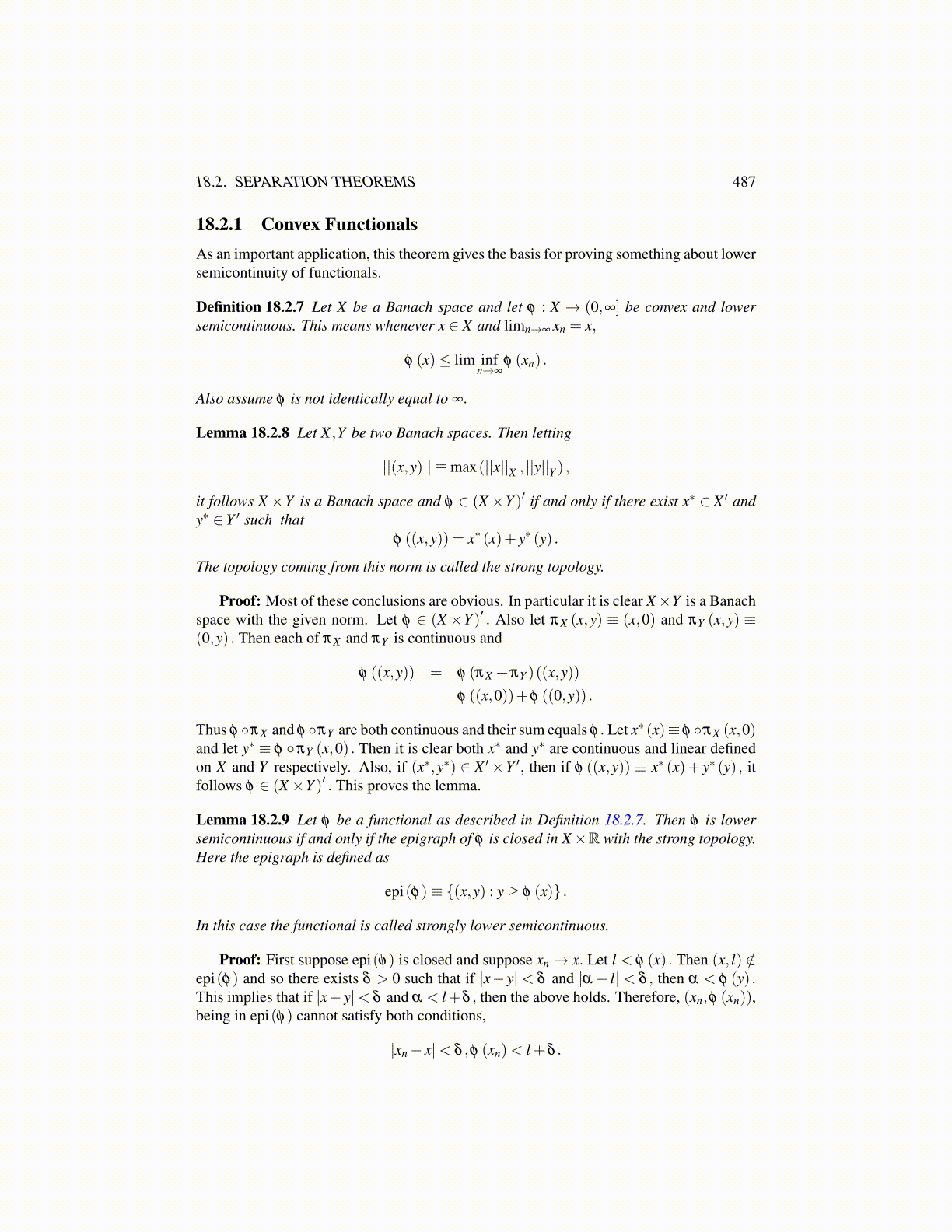
18.2. SEPARATION THEOREMS 487
18.2.1 Convex FunctionalsAs an important application, this theorem gives the basis for proving something about lowersemicontinuity of functionals.
Definition 18.2.7 Let X be a Banach space and let φ : X → (0,∞] be convex and lowersemicontinuous. This means whenever x ∈ X and limn→∞ xn = x,
φ (x)≤ lim infn→∞
φ (xn) .
Also assume φ is not identically equal to ∞.
Lemma 18.2.8 Let X ,Y be two Banach spaces. Then letting
||(x,y)|| ≡max(||x||X , ||y||Y ) ,
it follows X ×Y is a Banach space and φ ∈ (X×Y )′ if and only if there exist x∗ ∈ X ′ andy∗ ∈ Y ′ such that
φ ((x,y)) = x∗ (x)+ y∗ (y) .
The topology coming from this norm is called the strong topology.
Proof: Most of these conclusions are obvious. In particular it is clear X×Y is a Banachspace with the given norm. Let φ ∈ (X×Y )′ . Also let πX (x,y) ≡ (x,0) and πY (x,y) ≡(0,y) . Then each of πX and πY is continuous and
φ ((x,y)) = φ (πX +πY )((x,y))
= φ ((x,0))+φ ((0,y)) .
Thus φ ◦πX and φ ◦πY are both continuous and their sum equals φ . Let x∗ (x)≡ φ ◦πX (x,0)and let y∗ ≡ φ ◦πY (x,0) . Then it is clear both x∗ and y∗ are continuous and linear definedon X and Y respectively. Also, if (x∗,y∗) ∈ X ′×Y ′, then if φ ((x,y)) ≡ x∗ (x)+ y∗ (y) , itfollows φ ∈ (X×Y )′ . This proves the lemma.
Lemma 18.2.9 Let φ be a functional as described in Definition 18.2.7. Then φ is lowersemicontinuous if and only if the epigraph of φ is closed in X×R with the strong topology.Here the epigraph is defined as
epi(φ)≡ {(x,y) : y≥ φ (x)} .
In this case the functional is called strongly lower semicontinuous.
Proof: First suppose epi(φ) is closed and suppose xn→ x. Let l < φ (x) . Then (x, l) /∈epi(φ) and so there exists δ > 0 such that if |x− y| < δ and |α− l| < δ , then α < φ (y) .This implies that if |x− y|< δ and α < l+δ , then the above holds. Therefore, (xn,φ (xn)),being in epi(φ) cannot satisfy both conditions,
|xn− x|< δ ,φ (xn)< l +δ .